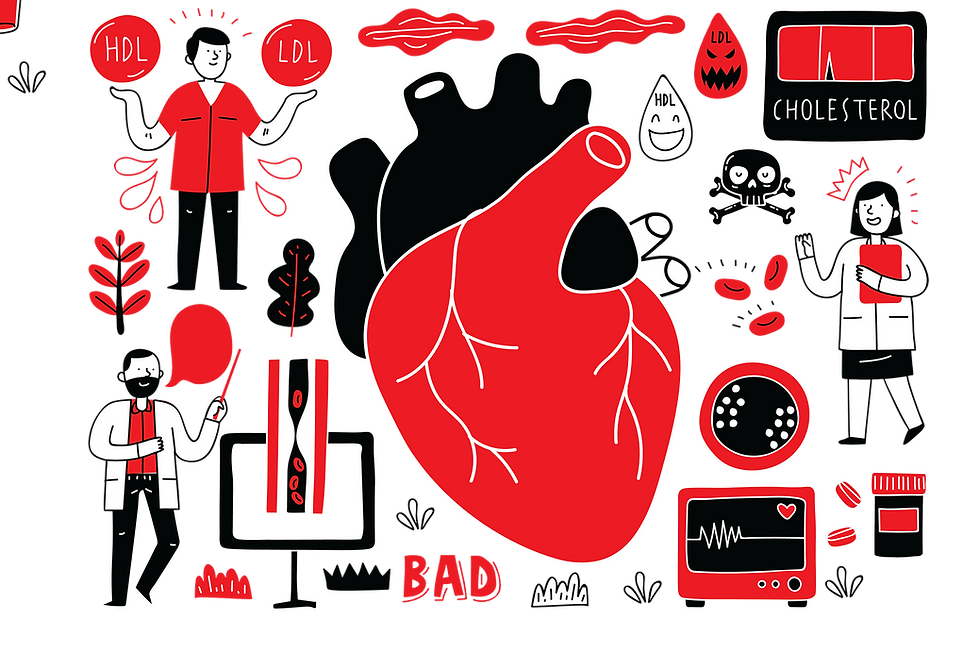Children’s Cholesterol - Does it Matter?
- Denise Scott
- Jul 24, 2024
- 2 min read
The American Academy of Pediatrics (AAP) recommends that lipid screening be done twice during childhood - once between 9-11 and again between 17-21. Lipids are the fats in the blood. This is checked by a blood test.

Cartoon depiction of lipids, such as cholesterol, HDL and LDL, and their effects in the blood and on the heart.
Why is this?
One reason is the growing obesity epidemic in children.
Another is that we know cardiovascular disease begins in childhood.

Picture of stethoscope and clipboard with the words "heart disease and stroke". The first steps to these cardiovascular diseases begin in childhood.
Some children should be screened earlier, between 2 and 10. These groups include:
Children with a family history of parents or grandparents who had a heart attack or stroke at or before age 55 in men or 65 in women.
Family history of cholesterol greater than 240 mg/dl.
Children whose family history is unknown.
Children who are at risk for heart disease, such as having diabetes, high blood pressure, or obesity.
If an initial screening is abnormal, this should be repeated for verification within a few weeks. If it is abnormal again, further evaluation should be done.
What are normal levels in a child?
Cholesterol LDL Triglycerides
(Ages 10-19)
Acceptable <170 <110 <90
Borderline 170-199 110-129 90-129
High >200 >130 >130
What causes high lipids?
There are numerous causes of elevated lipids. These include:
Obesity
Insulin resistance and diabetes
High intake of saturated fats
High sugar intake, primarily from processed foods and drinks
Physical inactivity
Kidney disease
Certain thyroid conditions
Inflammatory diseases
Hereditary or familial causes
Smoking
Excess alcohol intake
What can be done to prevent or improve high lipids?
There are definite steps you can take to be proactive against high lipids. A healthy lifestyle is a good start. Realize there are limitations in how much change can be made when causes are hereditary or from certain health conditions.
These steps are beneficial in any situation.
Maintain a healthy weight.
Get plenty of daily physical exercise - an hour a day for children.
Strive for a heart-healthy diet, such as the Mediterranean Diet, full of fresh vegetables, fruit, beans, whole grains, lean meats, and healthy fats from seafood, nuts, seeds, and vegetable oils.
Limit processed foods and drinks with added sugar.
Read labels to limit saturated fat, sugar, and salt intake.

Pictured are heart healthy foods which include fresh fruits and vegetables, nuts, whole grains, and lean protein.
How are high cholesterol/lipids treated in kids?
The first steps are similar to those listed above. You may also be referred to a dietitian to find ways to improve your child’s diet. A lipid panel will be repeated several months after starting any changes.
If these initial changes aren’t successful, or for levels in the higher ranges, medication may be used in children 10 and older. Your doctor may also refer you to a cardiologist (heart doctor) or a lipidologist (one who specializes in lipids).
If high cholesterol runs in your family or your child has any risk factors, have their levels tested. Maintaining normal lipid levels reduces the risk of later heart and blood vessel disease. Being proactive is the first step.



Comments